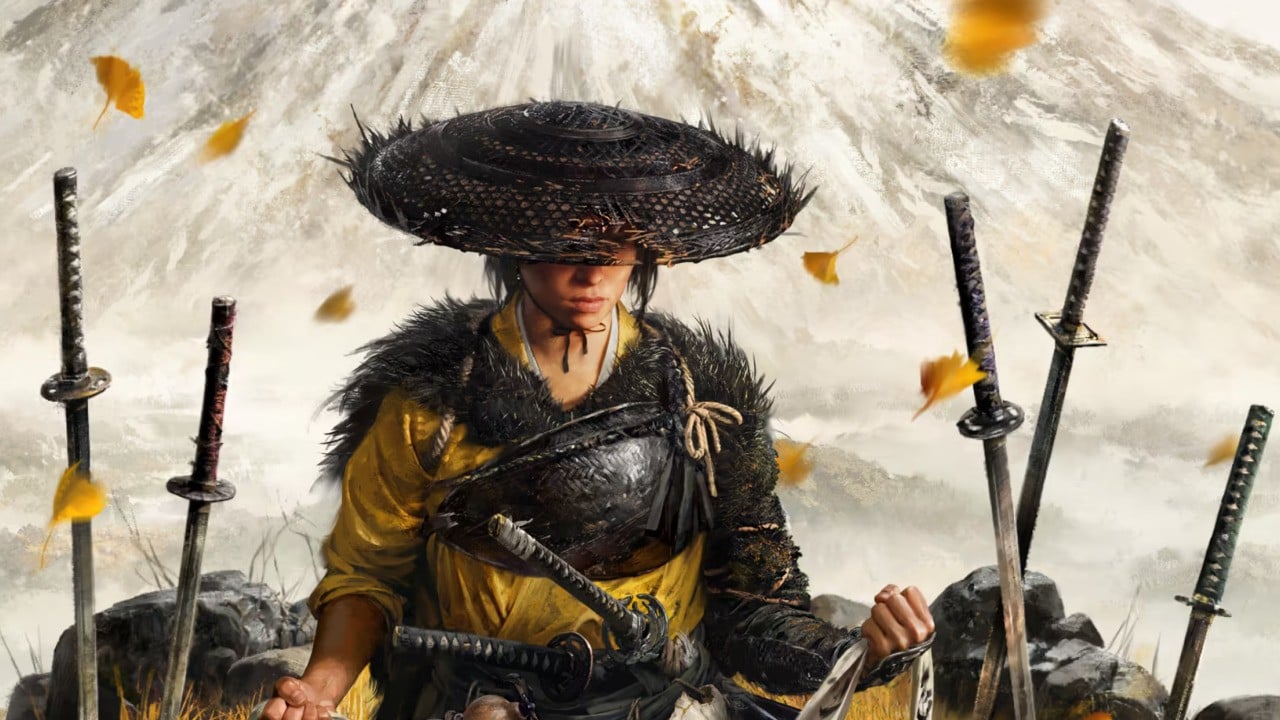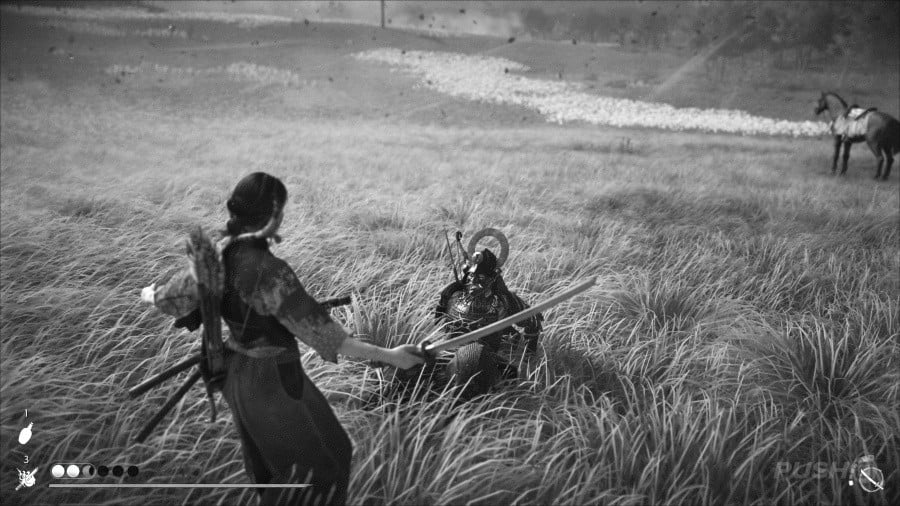
Sucker Punch Productions has a reputation for creating excellent sequel games. Having already delivered hits like Sly 2: Band of Thieves and inFAMOUS 2, the studio is now raising the bar even higher with their latest title, Ghost of Yotei.
After five years of development and refinement, Ghost of Tsushima has evolved into its best version yet, representing the team’s most impressive work so far.
This sequel takes everything people loved about the first game and makes it even better, while also fixing its problems. It then expands the experience with a more open and free-flowing world. Ghost of Yotei won’t necessarily change the minds of those who didn’t enjoy the original, but it’s a refined and improved version of Ghost of Tsushima, offering a great example of modern open-world game design.

The game shifts the story over 300 years into the past, to northern Japan near Mount Yōtei. Instead of Jin Sakai, players now follow Atsu, a vengeful spirit haunted by the murder of her parents. Her quest for revenge puts the six lords of Yōtei in danger, as she hunts them down one by one. Like *The Last of Us Part II*, the game centers around a powerful and consuming desire for vengeance.
Atsu has spent sixteen years planning her revenge, giving her ample time to consider what happened and how it unfolded. The story is revealed gradually through playable flashbacks, which add depth and build suspense.
The story weaves together two different time periods, helping us understand Atsu’s past and how it affects her present feelings and actions. As the story unfolds, she encounters allies, opponents, and everyone in between, creating compelling emotional moments and broadening the scope of the plot.
The main objective of the game is still to get revenge on the Yōtei Six, and you’re given some freedom to pursue them. However, the story unfolds in a structured way, with the map gradually becoming available in a set order, meaning it’s not completely open-world.

While Assassin’s Creed Shadows let you chase after any enemy whenever you wanted, Ghost of Yotei carefully guides your experience. This focus actually makes Atsu’s story more engaging, building suspense and delivering a thrilling adventure.
The game takes place in the expansive open world of Ezo, comparable in size to Ghost of Tsushima. This time, the developers have prioritized player freedom by removing many of the usual guides that point you to objectives and side quests. While the wind can still lead you to markers you set on the map, Ezo is designed to encourage exploration and reward curiosity.
Okay, so this game doesn’t hold your hand at all when it comes to quests. You don’t just get them handed to you; you actually have to *earn* them by helping people and, honestly, grilling enemies for info. And get this – the whole map is covered in a fog of war at the start. No quest markers, nothing! You have to physically go to places to uncover them. Even when you *do* find something interesting with your spyglass, it’s not a clear marker – it’s more like a rumor written on the map, so you still have to investigate to be sure. It feels way more immersive, but definitely requires some exploration!

The game world is large and expansive, but designed to avoid feeling daunting. While missions and optional tasks can lead you across great distances – tracked by a helpful clue system – the immediate surroundings always feel manageable, as the world only extends as far as you can currently see.
You’ll naturally want to explore the smaller villages, hunt for treasure, and take on side quests, knowing they’ll offer good rewards.
Ghost of Yotei revisits familiar elements from the original game – like bamboo groves, fox and wolf dens, hot springs, and shrines – while also introducing new things to do, such as creating Sumi-E paintings, discovering wolf dens, finding enemy camps, and completing bounties. The game carefully places these activities around the world to keep things fresh and prevent repetition.
I’m really enjoying how the game keeps me moving forward! Every time I finish a mission, I get cool new gear and upgrades, which then encourages me to explore even more. It’s a great cycle. And when I’m hunting down the Yōtei Six, there isn’t always a clear path, so I often just wander around and check everything out. There’s always something to discover – whether it’s a tough enemy I can interrogate, or a new charm that makes me even stronger. It keeps things fresh and exciting!

You can find information about the game’s story and characters in the Wolf Pack menu, accessible from the pause screen. Important characters will let you know when they have new items for sale or updates on quests. Plus, when you set up camp in Ezo’s valleys, your Wolf Pack members can visit and deliver resources to you directly.
This feature feels unnecessary because the game already offers easier ways to get supplies. You can simply find arrows and ammo while exploring enemy camps, instead of having to make them yourself. Plus, with fast travel being so quick, you can just go directly to the shop you need, rather than waiting for a vendor to show up at your camp.
The camp has a unique cooking feature, but the temporary boosts to attack and defense it provides aren’t very significant. We ultimately decided the Wolf Pack menu and the camp itself weren’t worth using, as we found faster and more effective ways to get the same benefits.

Even with upgrades, the combat remains challenging throughout the game. Instead of different fighting stances, you now have a variety of weapons, each effective in specific situations. A single katana is best against other swordsmen, while dual katanas are powerful against enemies with polearms. The large odachi is ideal for big enemies, Atsu’s spear excels against opponents using two weapons, and the kusarigama is designed to destroy shields.
You don’t have to focus on just one weapon, but it’s best to change your attack strategy depending on the enemy you’re facing. The game will give you five different weapons, and it can be tricky to remember what each one is good at when you’re quickly switching between them during a fight.
The combat system remains a strong improvement over the one in Ghost of Tsushima. Atsu can now use weapons like bows, a flintlock rifle, and various tools, including cloaking mist, bombs, and the ability to ignite her sword.

The game features a robust combat system with plenty of upgrades available through skill trees, letting you unlock powerful new moves and enhance existing ones. Like the original, you can use the Spirit system to unleash special attacks and defeat enemies with flair. You can also disarm opponents and use their own weapons against them for quick victories.
You can still play stealthily, especially when sneaking into enemy camps. However, the sequel doesn’t focus on this approach as much as the original game.
Ghost of Yotei introduces a wolf companion, but it’s not a constant partner. While early previews might have suggested a reliable ally, the wolf appears randomly during battles. You can improve its chances of showing up by finding and completing wolf dens scattered throughout the game world. Don’t expect to summon it like your horse, though. It’s a helpful addition that can eliminate or distract enemies, but it won’t always be available when you need it.

Sucker Punch has created a wonderfully diverse experience with its many combat choices and a rich, explorable open world. It’s truly refreshing to seamlessly switch between activities like artistic painting, battling enemies, climbing shrines, and discovering hidden fox dens. This creates a consistently rewarding and immersive samurai adventure from every perspective.
Plus, you can personalize your character’s appearance! With lots of customization options, you can change the look and color of your weapons and armor, and even add accessories. Charms let you create unique builds, so your Atsu can truly stand out.
As a fan, I have to say Ghost of Yotei is really setting the standard for graphics. The first game was a visual masterpiece on the PS4, and this sequel does the same thing for the PS5. Exploring the fields and mountains around Mount Yōtei is just breathtaking – the landscapes and little Edo-period villages are gorgeous. From a distance, it’s easily one of the most beautiful games I’ve seen on the PS5, though the details aren’t *quite* as sharp when you get up close.

Some of the less important characters and people you see wandering around town don’t look as detailed as the beautiful environments. Their faces, in particular, can appear blurry. Even a well-designed character like Atsu can sometimes look less polished when you’re exploring the open world compared to her appearance in cutscenes. However, this is a small issue in a game that generally looks fantastic on the PS5 Pro.
Sucker Punch did a great job taking full advantage of the PlayStation 5’s DualSense controller. They used the standard features like adaptive triggers and haptic feedback, but they also creatively integrated the touchpad for an even more immersive experience.
The main button offers a variety of actions activated by swiping in different directions – you can follow the wind, play music, bow, or manage your weapons. It’s also used for artistic activities like creating Sumi-E paintings and playing the Shamisen. The game even uses subtle motion controls to make actions feel realistic, such as hammering at the blacksmith’s forge or cooking over a campfire.

This game currently offers the most complete and innovative use of the PlayStation 5 controller we’ve seen – a testament to the developers’ skill and dedication.
The game also offers a variety of graphics settings. On the standard PlayStation 5, you can choose between three modes: Quality Mode (30 frames per second at a higher resolution), Performance Mode (60 frames per second at a lower resolution), and a Ray Tracing Mode (30 frames per second with ray tracing enabled). If you have a PlayStation 5 Pro, you get an additional Ray Tracing Pro mode, which aims for 60 frames per second at a middle ground resolution.
We spent 50 hours playing the game with the highest Ray Tracing settings, and it was a fantastic experience. We didn’t encounter any bugs or glitches, which made it feel like a polished, high-quality release. The game ran smoothly and looked beautiful throughout our entire playthrough on the PS5.

I’m really excited about the extra modes the team added! They brought back Kurosawa mode, which gives the game this awesome black and white look inspired by the famous director. But they also added two new ones! Miike mode is super intense – think more blood, more grime, and a really close-up camera angle. Then there’s Watanabe mode, which is totally cool because it plays lo-fi music over everything – even the menus! It really changes the vibe of the whole game.
These choices don’t quite fit for a first-time player, but they hint at the core themes of the game: a tribute to Japanese culture and the world of samurai. That’s precisely what Ghost of Yotei offers.
Read More
- Best Controller Settings for ARC Raiders
- Ashes of Creation Rogue Guide for Beginners
- Meet the cast of Mighty Nein: Every Critical Role character explained
- Bloober Team launches ‘Remosd Neul Serorehso Ovam Ceyerd’ countdown website
- Kit Keenan Slams Claim Mom Cynthia Rowley Helped Buy Her NYC Apartment
- Arc Raiders Guide – All Workbenches And How To Upgrade Them
- New Avengers: Doomsday Trailer Increases Thor’s MCU Death Chances
- Avengers: Doomsday Finally Gives The X-Men What Fox Refused To
- 7 Fantasy Movies That Aged Incredibly Poorly
- Stranger Things Season 5 Finale Reveals If Eleven Dies (But There’s a Catch)
2025-09-25 16:09